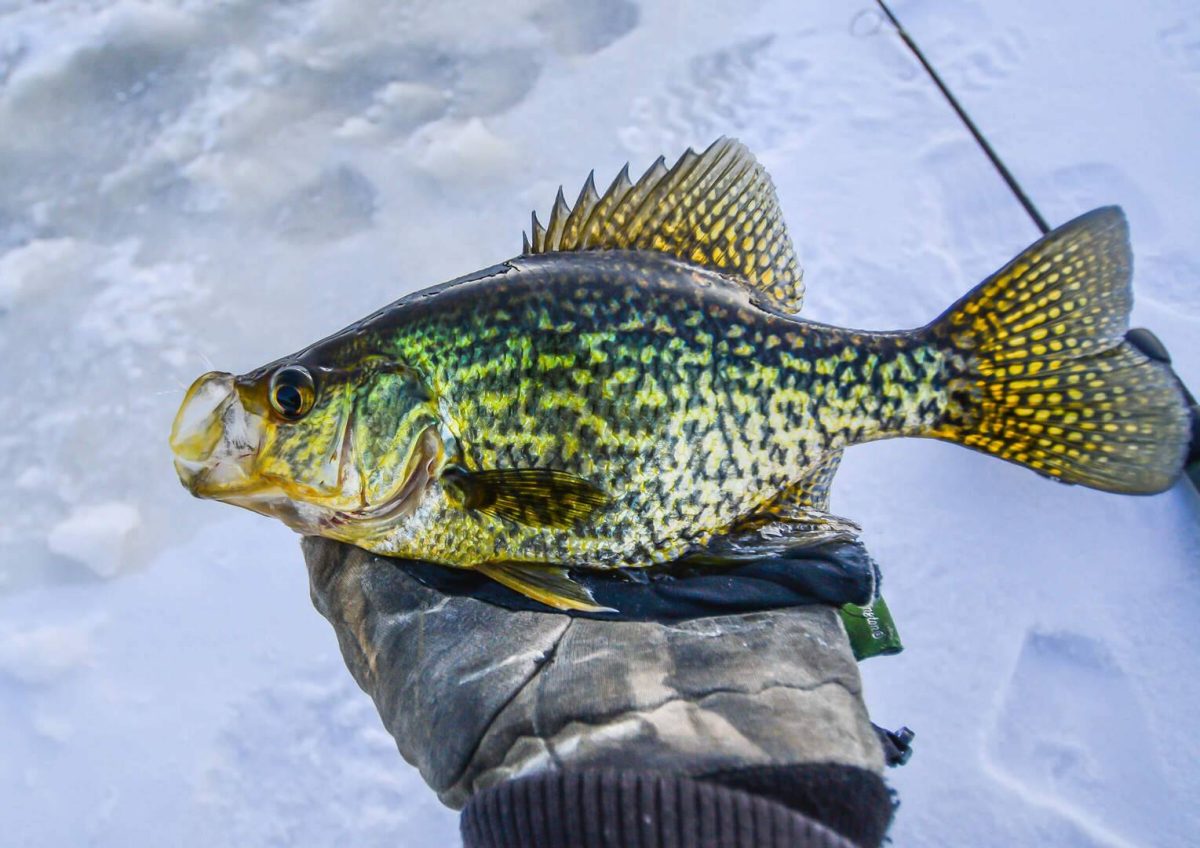Perch Iowa’s Overlooked Open Water Species

Perch Iowa’s Overlooked Open Water Species
Fishing in Iowa is one of the most common summer activities. You will hear about the crappie,bass, and catfish and where the monsters have been biting. But, the yellow perch does not seem to get much recognition. Although perch are overlooked, they are a great fish to catch and even better to eat. Yellow perch, aka ringed perch, or just perch are abundant in Iowa’s natural lakes and can be caught year round.
Perch can provide a wildly fast fishing experience as they feed in schools that have been recorded having up to 200 fish in a single group. Younger perch tend to school more than older and larger fish, which will sometimes travel alone. Males and females will often form separate schools. So catching one after another in minutes is not uncommon. Perch are known by many to be a fan favorite and once you fry one to a crispy, golden brown with your blend of seasonings, they are just about the most delicious fish you can catch!
Where to Locate Perch
Perch are located all throughout Iowa. The largest populations are found in natural lakes and the northern parts of the Mississippi River. You may also find that there are some man made lakes or ponds that hold an abundant amount of perch, but they are usually much smaller and most anglers are looking for a bigger, tastier perch. If you are unsure where to find them try using a topographic map and focus on finding lakes with a bottom contour change and make sure there is plenty of underwater structure. The Iowa DNR website will let you know which lakes have perch in them.
Perch are sight feeders and they need some source of light to find their prey. Schools of perch will start to feed after the sun begins to illuminate under the water. They tend to eat once in the morning and once in the late afternoon but they have been known to snack occasionally throughout the day. If you are planning on catching perch, then steer clear of any night time fishing trips.
When to Focus Perch
In Iowa’s natural lakes, perch fishing can be great between mid-to-late summer through late fall. Winter ice fishing and the cooler spring months are also a desirable time to fish for perch. They are found mostly in deeper water (10 to 20 feet) throughout most of the year. While a boat is the preferred method to fish for perch; shore and dock fishing can be a solid tactic too. Perch tend to gather around structures on the bottom of the lake, such as rocks, along the shorelines, beds of aquatic foliage and bottom drop offs.
We will get to tackle specifics in a moment. For now it’s all about skill and finesse. Whichever lure, bait, or gear you may be using, your success is usually dependent on how well the bait is presented to a perch. They orient toward the bottom of the lake, so your bait must be presented on or close to the bottom. Once you find the perch, it may be slow starting. This is where different lures and techniques come into play.
When you find what they are reacting to, the action is usually strong and steady as schools of perch continue to move through while feeding. Each time you catch a perch, drop the bait back in the water as quickly as you can because the next one will be ready to feed. Unlike bass fishing where the strike usually occurs as the bait drops, perch prefer to strike just as the bait is lifted off the bottom.
Don’t Give up
If you were having success a moment ago but everything has suddenly came to a halt, do not head off to a different spot just yet. Try casting in a circle all around where you were getting action before. Sometimes a school may only move over 5, 10, or 20 feet. You can also swish your rod tip across the top of the water to attract nearby schools of perch. If you start catching them again, try retrieving them on the slower side. Let them fight a bit. The flashing and thrashing of a fighting perch will surely bring others in to check out the feeding frenzy.
Rod and Reel Choices
Now for the equipment knowledge! Basic rod and reel combos will suffice for catching perch. When it comes to a rod choice, it will depend on your style of fishing. If you are trolling, then you should use a more rigid rod that is around 6 feet in length with a medium-heavy action. If you are jigging or casting then you should try a lighter rod that is around 6 feet in length with a medium action. Spool up your favorite reel with a light 4 to 6 pound monofilament line.
Lighter lines will have more sensitivity, which is useful because perch bite softly. Line color will usually be determined by the water clarity. A bobber will keep the bait in the proper position when casting around submerged vegetation or while shore fishing over different structures. Perch are notorious bait thieves and are known for their ability to strip the bait from your hook without pulling the bobber under. For this reason you should always try to use the smallest bobber that you can see.
Baits and Lures
Onto lure and bait choices. Soft and hard plastic lures that are used for perch will be many of the same types that are used for other panfish like crappie, bluegill, and sunfish. The smaller the lure the better the chance. Perch have small mouths and they will show little interest in a lure that is too big. A preferred lure by most anglers is a lead head jig. Again the smaller the better. A one thirty-second ounce will do great. You can find many styles of lead heads in any color. Some may have a soft plastic skirt, tied with feathers, or even coated in a neon fuzz. The skirted lead head, or mini-jig, is one of the most effective lures to catch a perch’s attention. Most perch anglers will agree that yellow, white, or a combo of yellow and white skirts will work the best in Iowa.
Live bait is not too common of an approach when fishing for perch, but it is still a method worth trying if lure fishing is not working or is not your style. Small minnows and insect larvae will work to satisfy a perch’s hunger. Minnows are a great bait if you are trolling or jigging. Insect larvae, like silver wigglers (they look like a mayfly larvae, with wings that fluctuate back and forth horizontally on the back) or maggots, are the most widely used live bait for perch. Wax worms and grubs can also be used. Although it is not alive, crayfish tail meat will function as an excellent perch bait.
Summary
There are many perch fisherman throughout Iowa, but a fish of this caliber should be talked about much more than it is. It will take a large amount of patience, a lot of trial and error, and a little luck to master this species of fish. It will be worth it though because perch are an absolute riot to catch and pound for pound, maybe even the best frying fish in Iowa’s natural lakes.
by Billy Pryor
July 2019
Here are some Shore Fishing Ideas to get onto more fish
If you are looking for this month’s issue of the Iowa Sportsman, Check it out Below
Here is the Cattle/Dairy side if you were wanting to check that out


